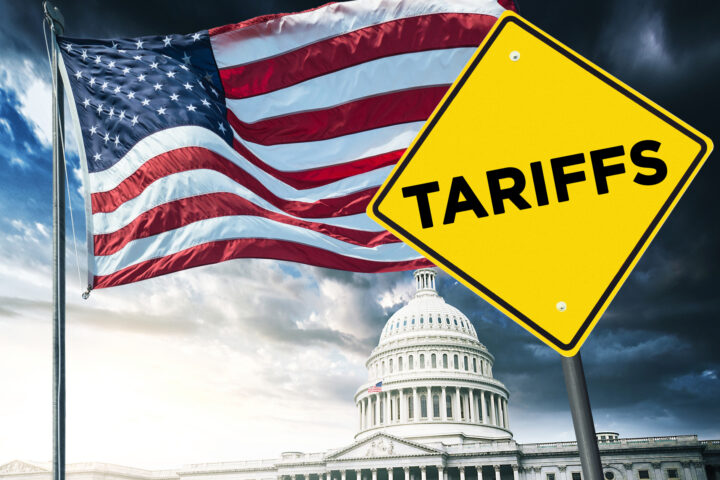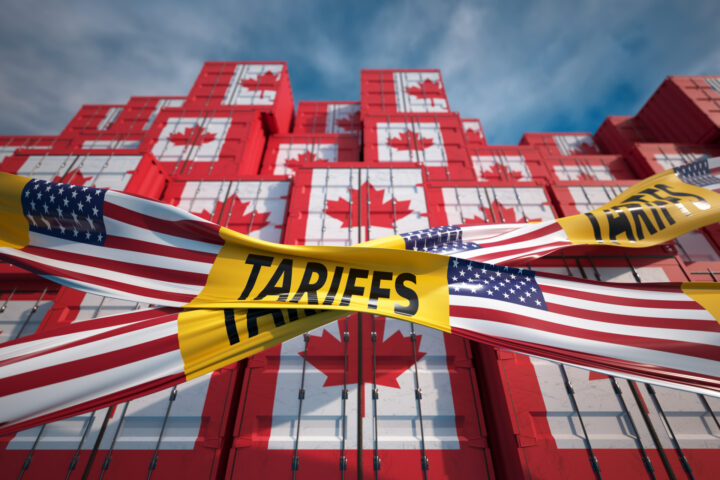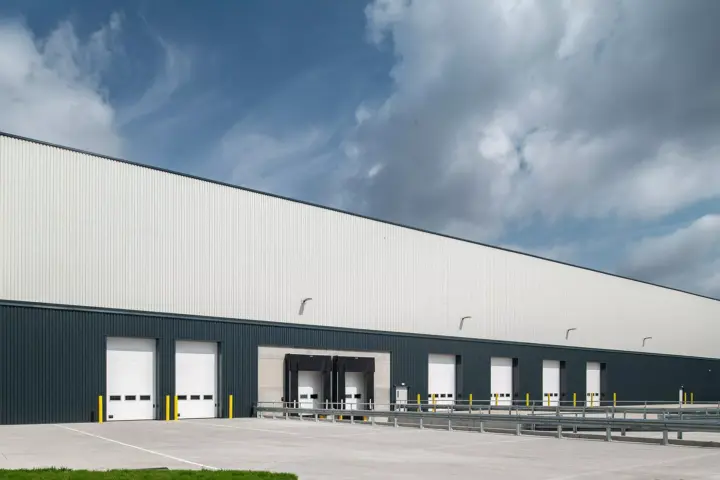There’s not a lot to like in this week’s freight data. Weak spot market rates continued to slide, truck sales are expected to slow as tariff-related price hikes take hold, and a “short and soft” peak season could be in store.

So much for balance?
ACT Research’s For-Hire Trucking Index, which reflected balance in May, showed an uptick in capacity and decrease of freight volumes in June.
Its Volume Index was soft for the fourth straight month, reflecting the impact of tariffs and lingering overcapacity.
“Volumes should improve in July and August following the tariff reprieve, but the pull-forwards in freight demand in the first half of the year will result in paybacks,” said Carter Vieth, ACT’s research analyst.
“Goods spending outpaced real income growth in 1H, suggesting even these soft volumes were supported by credit. And after surging 7.7% y/y in April, goods spending slowed to 3.7% in May, hinting at the beginning of the post-pull-forward decline. On the positive side, the recent slide in used tractor day cab prices suggests the private fleet insourcing phenomena may be starting to reverse.”
Capacity increased in June but the broader trend continues to show an overall decline.
“Publicly traded TL carriers’ profit margins remain near to the lowest levels since 2009, and on top of that, steel, aluminum, and parts tariffs have added thousands to the cost of a tractor,” said Vieth. “As result of challenging operating conditions, trade/economic uncertainty, and equipment cost increases, many fleets are opting to significantly reduce capital spending in 2025.”
ACT anticipates the market will improve in the near term, “but then the payback period after multiple pull-forwards in freight is poised to begin.”
Tariffs could lead to ‘short and soft’ peak season
ACT Research, in its Freight Forecast: Rate and Volume Outlook report, says the highest tariffs since the 1930s could lead to a “short and soft” peak season.
Tim Denoyer, ACT’s vice-president and senior analyst, said “The trucking market has shown notable softness since Roadcheck in mid-May, with rate trends sliding and a brief jump in demand in early July already fading and freeing up capacity. Capacity remained available even through the strongest seasonality of the year, partly because Class 8 tractor sales moved higher in Q2, counter to order trends, as the last pre-tariff vehicles were snapped up.”
Denoyer said equipment purchases are now likely to slow as tariff-related price increases on trucks and trailers are felt.

Trucking conditions weren’t bad in May
FTR’s Trucking Conditions Index rose to 3.56 in May, its strongest reading since February 2022. But don’t get too excited – FTR figures May was an outlier.
“The unusually robust TCI reading in May – certainly by the standards of the past couple of years – speaks more to the volatility of market conditions than it does improvement,” said FTR’s vice-president of trucking, Avery Vise.
“The index’s largest positive factor was falling diesel prices, which was not the situation in June or July, of course. Nor do we expect May’s big improvement in freight volume to be sustained. As we have noted, the supply chain’s efforts to anticipate and respond to changing tariff policies and other uncertainties make it difficult to get a firm read on the truck freight market’s trajectory. We still expect the start of a modestly more favorable market for carriers by early next year, but, frankly, we still see significant risks both to the upside and downside.”

Spot rates continue to slide
Truckstop.com and FTR Transportation Intelligence reported that already-soft spot market rates continued to fall for the week ended July 25, in line with seasonal expectations.
All equipment types saw rates fall, while dry van rates erased nearly all their gains from a two-week spike in late June and early July.
Reefer rates remain about 5 cents/mile above their mid-year surge, while both reefer and van rates were in line with this time last year. Flatbed rates were at their lowest level since February and saw their worst year-over-year comparison since February.
“With load postings declining and truck postings rising, the Market Demand Index eased to 78.7, which is stronger than it was during the July 4th holiday week but otherwise the weakest level since early May,” Truckstop.com said.













